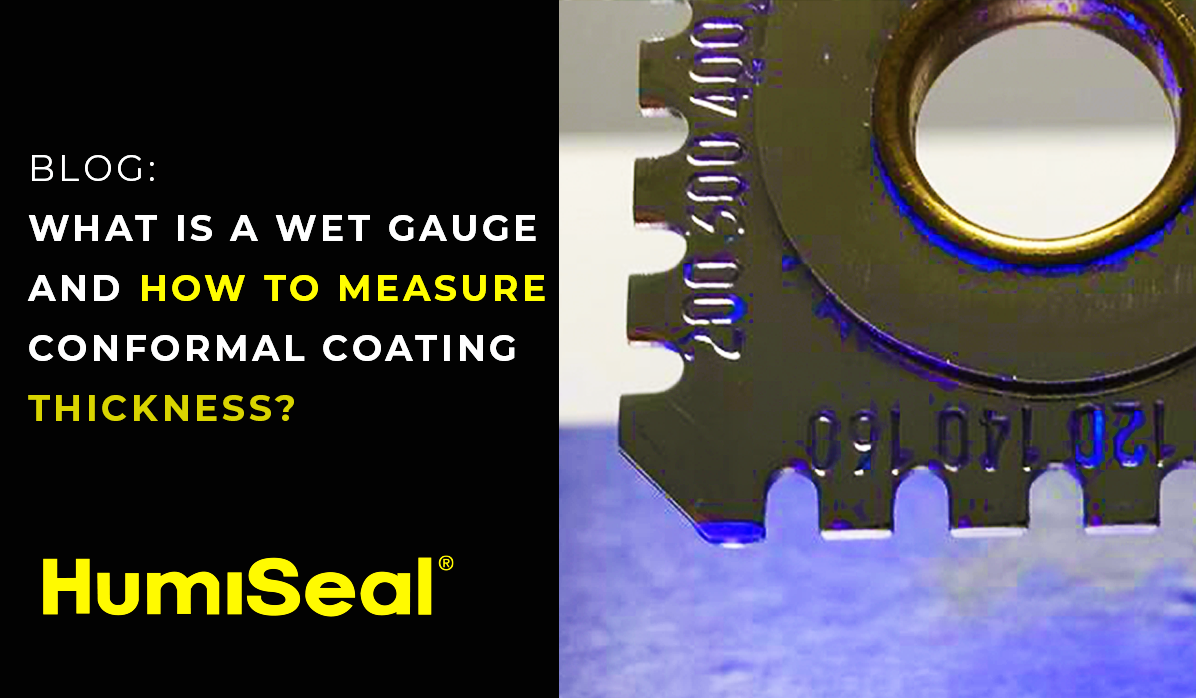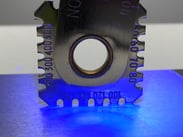
The application of the conformal coating in a uniform and consistent coverage is a key challenge that defines the reliability of the finished product.
A thin coating will provide inadequate protection against corrosion or insulation between conductors. Conversely, if the conformal coating is too thick, it will increase the risk of forming other types of coating defects such as bubbles, insufficient curing, and potential cracking during thermal shock cycles.
Besides the verification of the process parameters such as coating viscosity and the application method is correctly setup, the amount of conformal coating material applied on the printed circuit boards can be measured before curing. For this, wet film conformal coating thickness gauges are used. This method ensures quality control while the coating material is still wet.
The two types of gauges used are:
- Wet Film Combs
- Wet Film Wheels

Wet Film Combs is the most common method used for measuring wet film thickness.
The wet-film gauge consists of a series of combs with different distance between the marked points and the baseline.
After placing the comb into the wet coating film, the thickness can be measured in microns or mils and is determined by the number between the last tooth coated and the following tooth which is coating-free.
In the example shown in the right, the wet film thickness measures between 100 and 120 microns.
 Wet Film Wheels consist of two outer wheels fixed to a central spindle wheel. The thickness is measured by rolling the wheel on the maximum scale towards accurately ground zero.
Wet Film Wheels consist of two outer wheels fixed to a central spindle wheel. The thickness is measured by rolling the wheel on the maximum scale towards accurately ground zero.
When rolling the wheel on the coated substrate, the central wheel will touch the coating. The first point of contact on the central wheel determines the wet film thickness.
Both techniques are successfully used in the industry and are part of a solid conformal coating process control.
Applying the correct amount of conformal coating material will ensure adequate protection against corrosion or insulation between conductors.








